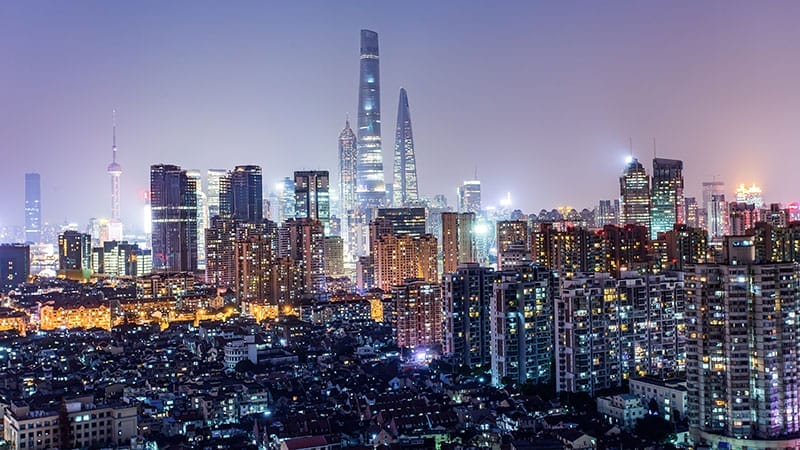2016 got off to a very rocky start where the markets are concerned. It all began in China a few weeks ago when I was in the country for the Wharton School visiting government, business and university leaders.
I was struck by how little the people I met with were talking about the Chinese stock market “crash.” Crisis, what crisis? It wasn’t that they were burying their collective heads in the sand. Far from it. Instead, the relative calm among Chinese elites reflects two things that tend not to be emphasized in critical stories about the Chinese markets and their contagious global effects.
1. Bad performance by the Chinese stock market creates more political problems than economic ones.
The connection between the (relatively small) publicly traded markets and the real economy in China is weaker than in a country like the U.S.—or in fact most Western economies. Just imagine if the Dow plummeted 20 percent. All hell would break lose in America. Not so in China.
Remember: The Chinese stock market has underperformed the real economy—that is, stock prices have lagged way behind growth—for ages. Put differently, consistently lackluster markets did not stop China from achieving spectacular growth rates for more than a decade in the new millennium.
The problem today for the Chinese government is that they began actively encouraging average citizens to borrow money and enter the stock market a couple of years ago. They implicitly guaranteed that prices would only go up, a dangerous game given the Chinese predilection for gambling.
With middle class Chinese now losing their shirts on stocks, the heat is turned up on the government—at least partially explaining their recent uncharacteristically ham-fisted and panicked policies: e.g., the market circuit breaker. If there is anything to worry about, it is not the stock indices themselves but rather how the government is reacting to them.
2. There is more than one Chinese economy, and the most important ones have already transitioned to high quality, sustainable growth.
The Chinese government’s goal is to transform most of the country into Shanghai-like economic modernity. To say the goal is ambitious is an understatement. The transformation challenge, from infrastructure, manufacturing and investment into services and consumption, is daunting. Success will be measured in years on the streets of Chinese cities we have never heard of, not weeks on stock indices instantly shared around the world.
There is good news in China’s eastern coastal core, the most developed region of the country and the template for what all the country might eventually resemble. I spent a day in Hangzhou, an hour on high-speed rail south of Shanghai and vying with Shenzhen to become China’s Silicon Valley. There is more construction there than in Shanghai as there are still greenfield sites to develop outside the city center. But the focus of the building in Hangzhou is on entrepreneurship and technology—more services, R+D, and high-skilled/robotic manufacturing than smokestacks, and not only Chinese firms like Alibaba but also Western ones like Cisco.
If Shanghai-like is the long-term goal, today’s reality is far from this. Shanghai itself is growing increasingly at ease with its place as China’s (and, inevitably, Asia’s) financial capital. Its Pudong district—created just 20 years ago out of paddy fields—is humming, but not with factories or new government infrastructure projects. Rather, it has attracted essentially every brand-name financial services firm in the world and all the high-end services that go with it, from salons to Michelin-starred restaurants. It’s not quite Wall Street, but the skyline is even more spectacular with the forthcoming 125-story Shanghai Tower as its exclamation point.
I have also seen up close Beijing’s large financial and entrepreneurial ecosystems while visiting our Penn Wharton China Center. Despite orbiting around the massive scale and reach of the Chinese state, the economic watchword in Beijing is innovation, not investment or infrastructure.
Greater Beijing and greater Shanghai are the equivalent of pretty large countries, with California/Spain+ populations. So too is the Shenzhen-Guangzhou megacity on the Chinese mainland next to Hong Kong. These are the most modern, highest per capita income and most economically advanced parts of China. They aren’t growing at 10 percent+. For that you have to go into the west (cities like Chengdu and Chongqing), where Chinese manufacturing has moved.
The coastal core has already transitioned to growing at closer to 5 percent. But that growth is much higher quality, it generates higher wages and it is more sustainable than the “China” we have become accustomed to in the past 20 years.
The challenge is in China’s center and west, where the urbanization process is far from complete, where manufacturing is now dominant, and where government-funded investment and infrastructure remain the main game. If Shanghai-like is the long term goal, today’s reality is far from this. Indeed, it is the Chinese interior–far from the country’s top “tier one” cities–that worry me most, and I suspect are roiling the markets today. Specifically, we should all be concerned about the possibility of a vicious cycle of slower growth a long way from China’s eastern coastal core, causing bad debts to pile up on balance sheets of provincial governments, that could in turn could trigger a bad debt/bad bank spiral among China’s massive state-owned banks.
That would become a real financial crisis with global impact. Close China watchers have been worried about this for years. But there is still no evidence yet that this dire scenario will play out. And the trillions of dollars in cash held by the big Chinese banks give them the ability to absorb lots of bad news and to write off lots of bad loans.
Either way, I remain struck by how modern–if not Western–China’s global cities and their economies are. It is truly hard to believe Chinese modernity without seeing it up close and personal. Which is why I am so committed to Wharton and Penn’s growing footprint, visibility and activity in the Middle Kingdom.
Editor’s note: The original version of this article appeared on LinkedIn on Jan 19, 2016.
























